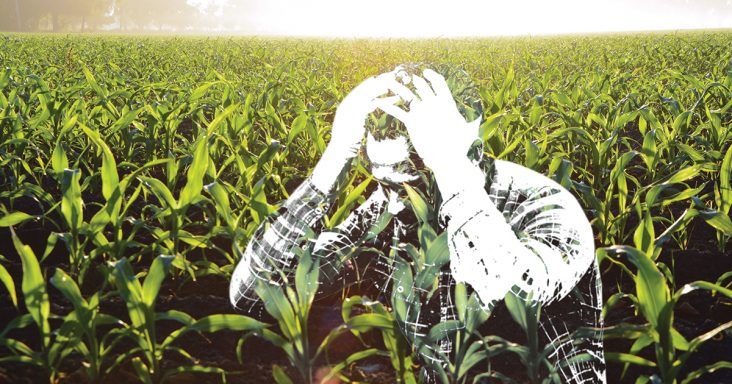Farm bankruptcies reach Great Recession numbers
by February 18, 2020 5:26 pm 4,033 views

International trade wars, low commodity prices, and erratic weather have plagued farmers throughout the country in recent years and the number of farmers going bankrupt is on the rise, according to an analysis done by American Farm Bureau.
In 2019, there were 595 Chapter 12 family farm bankruptcies in the U.S., the most since 637 were filed in 2011. It was almost 100 more than were filed in 2018. Filings tended to accelerate toward the end of the year with 147 being filed in the fourth quarter of 2019 alone, a 14% spike as compared to the same quarter the previous year, the analysis found.
Arkansas had 13 farms declare Chapter 12 and the state of Wisconsin, with a beleaguered number of dairy farmers, led the nation with 57. The number in Arkansas was unchanged from 2018. From 2010 to 2019, Arkansas had 134 bankruptcies in this category. During this same period, California had the most with 388 followed by Wisconsin (375), Georgia (351) and Florida (212).
During the last decade, about 1% of all farms have declared Chapter 12 bankruptcy.
Chapter 12 was created in 1986 in response to the poor economic conditions that plagued agriculture, including low commodity prices, low farm income, record farm debt and tight agricultural credit markets, according to AFB.
Modeled after Chapter 13 bankruptcy, Chapter 12 provides reorganizational advantages and financial relief specifically for family farmers in debt. Those advantages include a seasonal repayment schedule over a three- to five-year period and lower costs relative to other chapters. Filing under Chapter 12 provides a quick and predictable process for farmers to reorganize debt to avoid asset liquidation or foreclosure.
Not only are more farmers declaring bankruptcy at rates not seen since the Great Recession, but farm debts are rocketing to all-time highs. Farm sector equity – the difference between farm sector total assets and total debt – is forecast to rise 1.1% in 2020 to about $2.7 trillion (in nominal terms) and decline 0.7% in inflation-adjusted dollars, according to the U.S. Department of Agriculture. In nominal dollars, the expected increase in farm assets ($39.5 billion) is greater than the expected rise in farm debt ($9.7 billion). When adjusted for inflation, farm sector assets are expected to decline $18.1 billion, while farm sector debt is expected to rise $2 billion.
Farm debt in raw numbers is projected to hit $416 billion, USDA forecasts have reported, the most since the inflation-adjusted record of $431.6 billion in 1980 – a decade that crippled many in the farm industry.
Farming woes began following the 2013 growing season when prices for staple crops such as soybeans began to drop, but many of those trends grew rapidly after President Donald Trump began trade wars with China, Mexico, and Canada. The administration has poured billions of dollars into the farm community in hopes of making up for the trade war tariff-fueled losses.
The USDA pegged net farm income, a measure of wealth, at $92.5 billion, up 10% from 2018, due to federal payments and higher-than-expected commodity prices, according to Agriculture.com. Income peaked at a record $123.7 billion in 2013, plunged to a low of $62.2 billion in 2016, and climbed ever since. In 2019 alone, the federal government was projected to pour another $14.5 billion into the system to offset the tariffs.
Some relief might be on the way. The U.S. and China signed the first phase of a trade agreement earlier this year and that might open markets. Bob Stark, professor of agriculture economics for the University of Arkansas, recently told Talk Business & Politics the farmers he knows want to get back to farming and selling crops the way it was done earlier in the last decade.
“Looking forward to 2020, trade policy is something that’s still unclear at this time. I think farmers, and the industry as a whole, are looking forward to a more typical year in production and marketing, both domestic and foreign,” Stark said.
